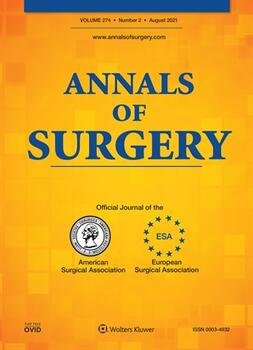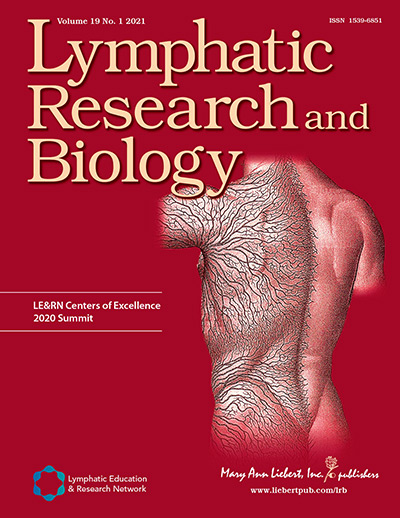Since 2010, our team has published over 45 papers discussing Breast Cancer-Related Lymphedema
Our research focuses on survivorship, investigation of symptoms, impact on quality of life and early detection and intervention of breast cancer related lymphedema, cardiac and pulmonary toxicity from radiation and partial breast irradiation in one week radiation treatment for early breast cancer
-

Subclinical Lymphedema After Treatment for Breast Cancer: Risk of Progression and Considerations for Early Intervention.
-

Use of technology to facilitate a prospective surveillance program for breast cancer-related lymphedema at the Massachusetts General Hospital
-

Integrating Symptoms Into the Diagnostic Criteria for Breast Cancer-Related Lymphedema: Applying Results From a Prospective Surveillance Program
This study aimed to analyze the rates of subclinical lymphedema (SCL) progression in women undergoing axillary surgery for breast cancer via axillary lymph node dissection (ALND) or sentinel lymph node biopsy (SLNB). Research suggests that patients who experience SCL after ALND are more likely to get BCRL compared to those who underwent SLNB. And, regardless of the treatment received for breast cancer, those who develop SCL are more likely to get BCRL than those who do not develop SCL.
This paper discusses the use of technology for breast cancer-related lymphedema (BCRL) screening in order to produce reliable and valid data as a way to help prevent the progression of BCRL. Some of these technologies include perometry, bioimpedance spectroscopy, tissue tonometry, and three-dimensional optical imaging. This paper specifically looks at the use of technology and screening at Massachusetts General Hospital.
A longitudinal study of 647 women treated for breast cancer and screened for lymphedema via arm volume measurements and questionnaires was done to discover which post-operative symptoms are associated with later development of lymphedema. Research found that patients who report increased arm size after surgery are at high risk for developing breast cancer-related lymphedema. These patients should be screened diligently and early intervention should be considered for these patients.
-

Patients who report cording after breast cancer surgery are at higher risk of lymphedema: Results from a large prospective screening cohort
-

Quantifying the Impact of Axillary Surgery and Nodal Irradiation on Breast Cancer-Related Lymphedema and Local Tumor Control: Long-Term Results From a Prospective Screening Trial
-

Timing of Lymphedema After Treatment for Breast Cancer: When Are Patients Most At Risk?
A study was done prospectively screening 1181 patients for breast cancer-related lymphedema (BCRL) after surgery via patient-reported outcome measures and perometric arm volume measurements to find a potential association between patient report of cording and BCRL. Results suggest that patients who report cording in the arm on the side of breast cancer treatment are at a higher risk (2.4 times more likely) of developing breast cancer-related lymphedema.
Research was done on 2171 women who received surgery for unilateral or bilateral breast cancer to determine which factors influence the time course of lymphedema development. Results propose that there is an association between the type of axillary surgery used and risk of developing breast cancer-related lymphedema (BCRL): axillary lymph node dissection (ALND) alone had a significantly higher BCRL risk compared to sentinel lymph node biopsy (SLNB) and regional lymph node radiation (RLNR) done together. There was no notable difference in BCRL risk between ALND+RLNR and ALND alone, and between SLNB+RLNR and SLNB alone.
This study aimed to determine when the risk of lymphedema is highest after treatment of breast cancer and which treatment factors influence the time course of lymphedema development. The perometer was used on 2171 woman who received breast cancer surgery to measure limb volume preoperatively and postoperatively. Patients who undergo axillary lymph node dissection (ALND) are at highest risk of lymphedema development between 6 and 12 months postoperatively. Patients who undergo sentinel lymph node biopsy are at highest risk of lymphedema development between 36 and 48 months postoperatively.
-

Incidence of peripheral edema in patients receiving PI3K/mTOR/CDK4/6 inhibitors for metastatic breast cancer
-

Breast cancer-related lymphedema: risk factors, precautionary measures, and treatments
-

Association between precautionary behaviors and breast cancer-related lymphedema in patients undergoing bilateral surgery.
The purpose of this study was to evaluate the development of edema in patients receiving PI3K/mTOR/CDK4/6 targeted therapy for metastatic breast cancer. Results suggest that targeted therapy of metastatic breast cancer, including PI3K/mTOR/CDK4/6 inhibitors, may impact the development of edema in patients. Thus, patients involved in these therapy regimens should be monitored carefully for the development of edema.
This article is a comprehensive review of the risk factors, precautionary measures, and treatments regarding breast cancer-related lymphedema (BCRL).
The purpose of this study was to analyze lifestyle and clinical risk factors for lymphedema among patients who underwent bilateral breast cancer surgery. Results found that having a body mass index ≥ 25 kg/m2 at the time of breast cancer diagnosis, having undergone axillary lymph node dissection, and receipt of adjuvant chemotherapy were significantly associated with increased arm volume. However, there was no association between lifestyle risk factors and increased arm volume.
-

Impact of ipsilateral blood draws, injections, blood pressure measurements, and air travel on the risk of lymphedema for patients treated for breast cancer.
-

Establishing and sustaining a prospective screening program for breast cancer-related lymphedema at the Massachusetts General Hospital: Lessons Learned.
The purpose of this study was to examine the association between blood draws, injections, blood pressure readings, trauma, cellulitis in the at-risk arm, and air travel and increases in arm volume in a group of patients treated for breast cancer and screened for lymphedema. Cellulitis is significantly associated with increased arm volume, however, ipsilateral blood draws, injections, blood pressure readings, and air travel are not associated with arm volume increases in this cohort.
This paper reveals the process by which the Massachusetts General Hospital’s Lymphedema Research Program established a prospective surveillance program to screen for lymphedema. Longitudinal screening is recommended starting preoperatively and continuing at regular intervals post-operatively with subjective and objective measures as standard of care for screening for breast cancer-related lymphedema.
Additional Published Papers
-

Patients who report cording after breast cancer surgery are at higher risk of lymphedema: Results from a large prospective screening cohort.
-

Breast Cancer-Related Lymphedema: Risk Factors, Screening, Management, and the Impact of Locoregional Treatment.
-

Association between precautionary behaviors and breast cancer-related lymphedema in patients undergoing bilateral surgery.
-

Diagnosis of Upper Quadrant Lymphedema Secondary to Cancer: Clinical Practice Guideline from the Oncology Section of the American Physical Therapy Association.
-

Comparison of relative versus absolute arm size change as criteria for quantifying breast cancer-related lymphedema: The flaws in current studies and need for universal methodology.
-

Diagnostic methods, risk factors, prevention, and management of breast cancer-related lymphedema: Past, present, and future directions.
-

Risk from air travel, ipsilateral arm blood pressure measurements, skin puncture, extreme temperatures, and cellulitis.
-

Immediate implant reconstruction is associated with a reduced risk of lymphedema compared to mastectomy alone: A prospective cohort study.
-

The need for preoperative baseline arm measurement to accurately quantify breast cancer-related lymphedema.
-

A comprehensive review of bioimpedance spectroscopy as a diagnostic tool for the detection and measurement of breast cancer-related lymphedema.
-

The Role of Sonographic Imaging to Assess the Pathophysiology of Cording in Patients Treated for Breast Cancer: A Pilot Study.
-

The impact of breast cancer-related lymphedema on the ability to perform upper extremity activities of daily living.
-

Impact of adjuvant taxane-based chemotherapy on development of breast cancer-related lymphedema: results from a large prospective cohort.
-

Radiation therapy risk factors for development of lymphedema in patients treated with regional lymph node irradiation for breast cancer.
-

Factors associated with fear of lymphedema after treatment for breast cancer.
-

Risk of lymphedema after mastectomy: Potential benefit of applying ACOSOG Z0011 protocol to mastectomy patients.
-

Lymphedema following breast cancer treatment and impact on quality of life: A review.
-

Impact of body mass index and weight fluctuation on lymphedema risk in patients treated for breast cancer.
-

The impact of radiation therapy on the risk of lymphedema after treatment for breast cancer: A prospective cohort study.
-

A novel, validated method to quantify breast cancer-related lymphedema (BCRL) following bilateral breast surgery.
-

Cording following treatment for breast cancer.
-

Residual lymph node disease after neoadjuvant chemotherapy predicts an increased risk of lymphedema in node-positive breast cancer patients.
-

Screening for Breast Cancer-Related Lymphedema: The Need for Standardization.
-

Defining a threshold for intervention in breast cancer-related lymphedema: What level of arm volume increase predicts progression?

